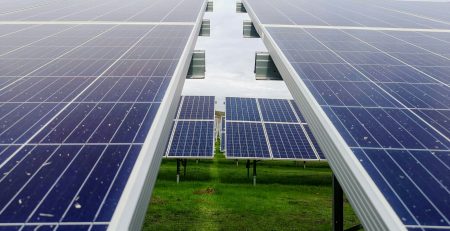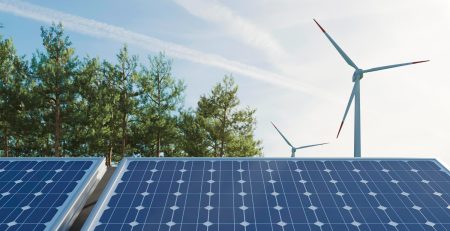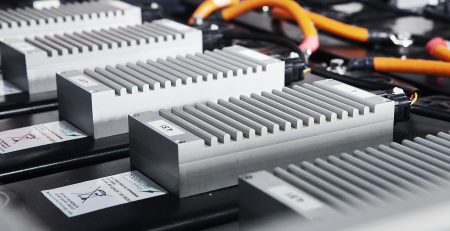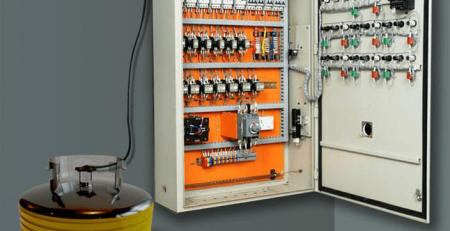CMPES: Fueling the Future of Electric Transportation – Continuous Power on the Go
The trend toward electric vehicles (EVs), which provide a more sustainable and ecologically friendly substitute for traditional gasoline-powered cars, is gaining traction. However, current EV technology faces limitations, particularly regarding driving range and dependence on charging stations. These limitations can cause what is known as “range anxiety” for drivers, hindering the widespread adoption of EVs.
Enter the Constant Micro Power Energy System (CMPES), a revolutionary innovation poised to disrupt the electric transportation landscape. This renewable energy device has the potential to eliminate the very challenges that currently plague EVs, paving the way for a future of continuous power on the go.
The Range Anxieties of Electric Vehicles
The primary concern for many EV drivers is range anxiety. Unlike gasoline vehicles that can be refueled in minutes, charging an EV battery can take a few hours or as long as thirty minutes, according to the battery capacity and charging station. This significantly impacts travel planning and spontaneity, as drivers must meticulously factor in charging stops and adjust their routes accordingly. Additionally, the availability of charging stations, particularly on long journeys or in rural areas, can be limited, further exacerbating range anxiety.
The CMPES Advantage: Continuous Power Generation
The CMPES device addresses these challenges head-on by continuously generating clean energy to power an EV while in motion. Unlike traditional batteries that store pre-charged energy, CMPES acts as a miniaturized power plant, eliminating the need for a bulky storage system. This continuous power generation significantly extends the driving range of EVs, allowing for uninterrupted journeys without the need for conventional charging stops.
How Does CMPES Work?
The exact technical specifications of CMPES are likely still under development, but the core principle revolves around harnessing readily available renewable energy sources. Here are some potential operating mechanisms:
- Solar Power: Solar panels integrated into the vehicle’s body could continuously collect solar energy and convert it into electricity using photovoltaic cells. This would be particularly beneficial in sunny regions where solar energy is abundant.
- Kinetic Energy Recovery: Kinetic energy generated during braking can be collected and transformed into energy by a regenerative braking system. This recovered energy would then power the vehicle, extending its range.
- Ambient Vibrations: Vibrations from the road surface or the vehicle’s movement could be harnessed through piezoelectric materials. These materials convert mechanical energy into electrical energy, providing a constant trickle of power to the EV.
The Transformative Impact of CMPES
The successful implementation of CMPES technology would profoundly impact electric transportation. Here’s a glimpse into the potential future:
- Eradicating Range Anxiety: With continuous power generation, drivers no longer worry about running out of power or meticulously plan their journeys around charging stations. This would significantly enhance the practicality and convenience of EVs, making them a more attractive option for a broader range of consumers.
- Increased Driving Range: The ability to generate power while driving could double or even triple the driving range of current EVs. This would allow long-distance travel without conventional charging, fostering greater freedom and flexibility for EV owners.
- Reduced Reliance on Charging Infrastructure: The widespread adoption of CMPES could significantly reduce the reliance on conventional charging station infrastructure. This would be cost-effective and alleviate concerns about the availability of charging stations, particularly in remote areas.
- Environmental Benefits: By generating clean, renewable energy, CMPES would further contribute to the environmental benefits of electric vehicles. This would lead to a reduction in greenhouse gas emissions and a cleaner transportation sector.
Challenges and Considerations
While the potential of CMPES is undeniable, some challenges must be addressed before it can be widely adopted. Here are some key considerations:
- Energy Efficiency: Energy conversion efficiency within the CMPES device is crucial. The system must generate enough power to meet the vehicle’s demands while remaining compact and lightweight.
- Cost-Effectiveness: The cost of developing, manufacturing, and integrating CMPES technology into EVs needs to be carefully evaluated. The technology must be affordable to ensure the economic viability of CMPES-powered EVs.
- Weather Dependence: The effectiveness of specific CMPES mechanisms, such as solar panels, may be impacted by weather conditions. Further research and development are needed to ensure reliable power generation under varying weather patterns.
The Road Ahead: A Brighter Future for Electric Transportation
The CMPES technology represents a significant leap forward in the evolution of electric vehicles. Despite ongoing difficulties, there are unquestionable potential advantages. By addressing range anxiety, reducing reliance on charging infrastructure, and promoting clean energy generation, CMPES has the potential to revolutionize electric transportation, paving the way for a future where electric vehicles are not just an alternative but the preferred mode of transportation.
The development of CMPES is not just about creating a new technology; it …is about reimagining the concept of electric mobility. It signifies a shift from a “stop and charge” model to one of continuous, uninterrupted power. This not only enhances the user experience but also opens doors for innovative applications of electric vehicles.
Unlocking New Possibilities with CMPES
The continuous power generation of Constant Micro Power Energy System extends beyond personal transportation, opening doors for exciting possibilities in various sectors:
Public Transportation: Electric buses equipped with CMPES could operate continuously on designated routes, eliminating the need for scheduled charging breaks and improving public transportation efficiency.
Commercial Fleets: Delivery trucks and other commercial vehicles could benefit from extended range and reduced downtime for charging, leading to increased productivity and operational efficiency.
Emergency Response: Emergency vehicles like ambulances and fire trucks could leverage CMPES for uninterrupted power supply, ensuring their readiness and responsiveness during critical situations.
Beyond Transportation: The Ripple Effect of CMPES
The impact of CMPES technology may not be limited to the transportation sector. The concept of continuous, on-the-go power generation has the potential to revolutionize other aspects of our lives:
Remote Power Supply: CMPES devices could be adapted to offer a dependable renewable energy source in isolated areas with restricted grid connectivity.This could be particularly beneficial for powering essential services in rural areas or during natural disasters.
Portable Power Solutions: Compact versions of CMPES could be developed to provide portable power for camping trips, outdoor events, or even disaster relief efforts. This would eliminate the dependence on bulky generators and promote a cleaner, more sustainable approach to portable power.
Reimagining Electric Aircraft
The Constant Micro Power Energy System (CMPES) isn’t just poised to disrupt the electric vehicle landscape; it has the potential to revolutionize electric aviation as well. While conventional electric airplanes face range and payload capacity limitations, CMPES offers a compelling solution, promising a future where electric aircraft soar on continuous, clean power.
The Challenges of Electric Flight
Electric airplanes hold immense promise for a more sustainable future of aviation. However, current battery technology presents significant hurdles:
- Limited Range: The weight of batteries significantly restricts the range of electric aircraft, making long-distance flights impractical.
- Payload Capacity: The trade-off between battery weight and payload capacity limits electric airplanes’ cargo or passenger capacity.
- Charging Time: Recharging large batteries for electric airplanes can be time-consuming, impacting operational efficiency.
The continuous power generation of CMPES offers a potential solution to these challenges, enabling:
- Extended Range: By constantly generating electricity during flight, CMPES could significantly extend the range of electric airplanes. Imagine electric air taxis operating across wider distances or electric cargo planes carrying heavier loads over longer routes.
- Increased Payload Capacity: With CMPES alleviating reliance on bulky batteries, electric aircraft could dedicate more space to cargo or passengers, enhancing their economic viability.
- Reduced Downtime: The ability to generate airborne power would eliminate the need for lengthy grounding for recharging, streamlining operations, and improving flight schedules.
Potential Applications of CMPES in Electric Aviation
The impact of CMPES in electric aviation could be far-reaching, transforming various sectors:
- Urban Air Mobility: Electric air taxis equipped with Constant Micro Power Energy System could become a reality, offering quieter, cleaner transportation options within and between cities.
- Regional Commuter Flights: Thanks to CMPES, short-haul regional flights could be powered by electric airplanes with extended range, reducing noise pollution and emissions over populated areas.
- Cargo Delivery: Electric cargo planes with increased payload capacity, enabled by CMPES, could revolutionize the logistics industry, promoting sustainable and efficient freight transportation.
The Future of Flight: A Collaborative Endeavor
Similar to the ground transportation sector, realizing the potential of CMPES in aviation requires collaboration between various stakeholders:
- Aerospace Manufacturers: Aircraft manufacturers need to invest in research and development to integrate CMPES effectively into new and existing electric aircraft designs.
- Renewable Energy Companies: Collaboration with renewable energy companies is essential to develop efficient energy harvesting mechanisms suitable for high-altitude flight.
- Aviation Authorities: Regulatory bodies need to develop frameworks that ensure the safe integration of CMPES technology into electric aircraft operations.
- Government Agencies: Government support through funding initiatives and regulatory frameworks can accelerate the development and adoption of CMPES technology.
A Sustainable Takeoff
CMPES technology offers a glimpse into a future where electric airplanes are not just a novelty but a viable and sustainable mode of air travel. By addressing range limitations, increasing payload capacity, and reducing reliance on ground charging, Constant Micro Power Energy System has the potential to transform the aviation industry. The journey towards electric skies requires a collaborative effort, but the potential benefits are undeniable. By embracing innovation and harnessing the power of continuous, clean energy, we can take flight toward a more sustainable future for aviation.











Leave a Reply